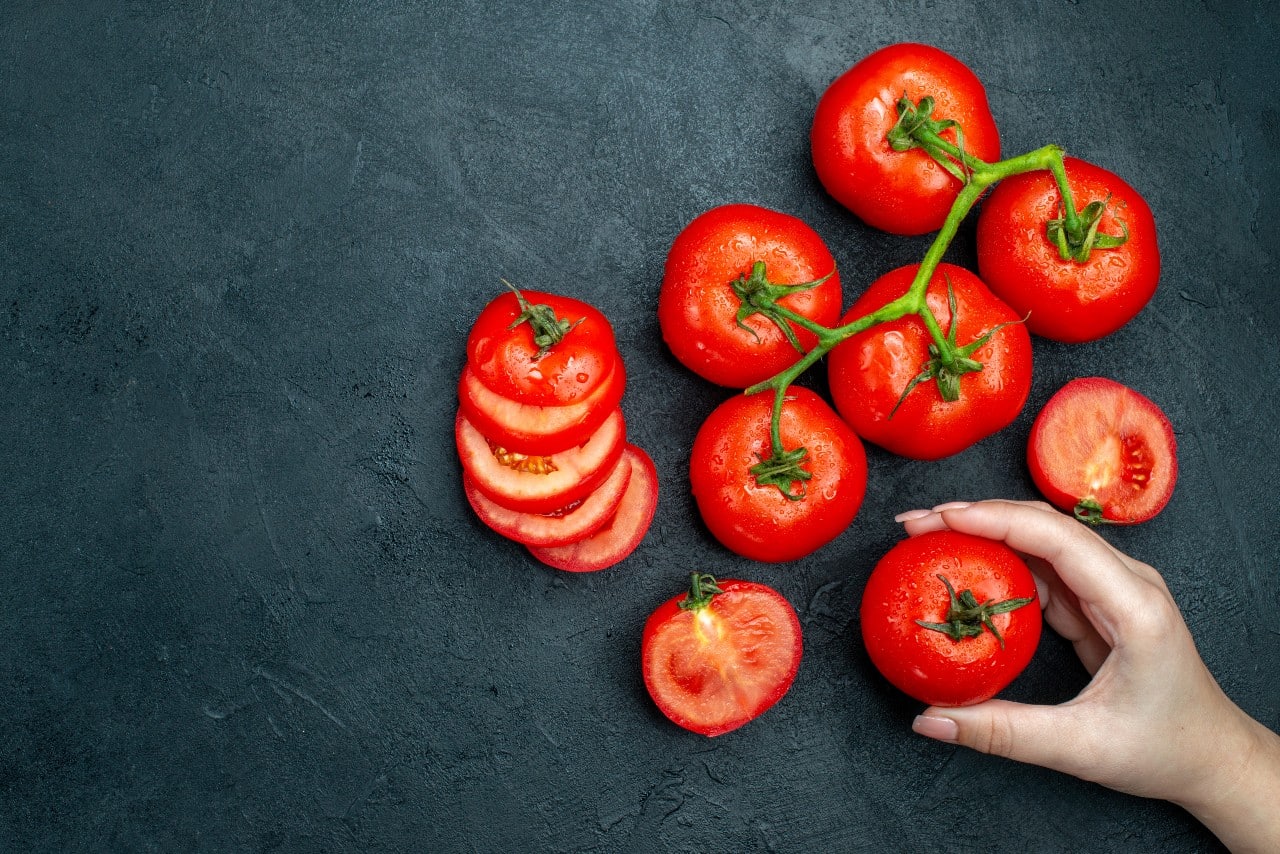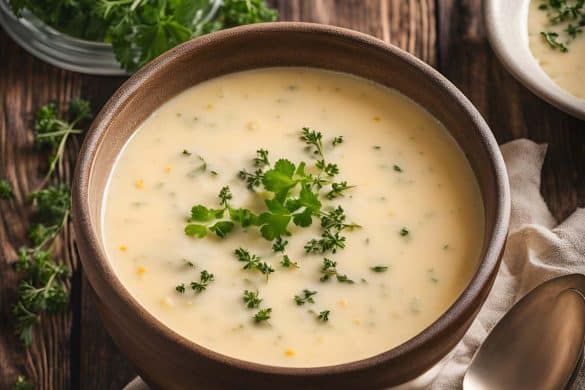Ever wonder why tomatoes are called a “superfood”? Is it because they wear a cape? Well, not quite— it’s because they’re packed with an impressive range of nutrients that few other fruits can match. Yes, you heard that right—tomatoes are technically a fruit, but let’s set that debate aside for now.
For ages, these varieties of tomatoes have been a key ingredient in Indian cooking, adding their signature tang to nearly every dish. However, tomatoes aren’t just tasty but super good for your health. From helping to fight cancer cells and reducing high blood pressure to giving your skin a healthy glow, they’re loaded with benefits that make them a must-have in your diet.
This blog will cover 6 excellent reasons to eat tomatoes regularly, easy ways to add them to your meals, and even a few side effects to watch out for (because, like anything, too much of a good thing can be bad). Let’s jump in and get to the juicy details!
6 Ways Tomatoes Can Boost Your Health (Benefits Inside)

Fresh tomatoes on a marble table
Tomatoes are packed with many nutrients and are mostly composed of water content, making them a wholesome addition to your food. They can also be consumed raw, as some people slice the fruit to add to their regular salad or dish, whatever piques your fancy. However, cooking tomatoes adds authentic flavour to the mix. Below, we’ve put together a roundup of the health benefits of tomatoes.
1. Boosts Heart Health
One of the prime benefits of eating raw tomatoes is A+ heart health. Packed with vitamin C and other vital nutrients, they help prevent the risk of cardiovascular disease, a leading cause of death for many people. Lycopene, the powerful antioxidant properties in tomatoes, is known for lowering cholesterol and blood pressure, reducing the risk of heart disease. Plus, the chlorogenic acid in tomatoes keeps blood vessels healthy and flexible. Whether you enjoy them raw or as part of a sauce or juice, adding tomatoes to your diet is a delicious way to keep your heart happy and strong.
Also read: Indian Tomato Recipes here.
2. Nourishes Skin Health and Promotes Radiance
Tomatoes are a skincare superstar thanks to their high vitamin C content. This nutrient is essential for the production of collagen, the protein that gives skin its structure and elasticity. Collagen production slows down as we age, leading to wrinkles and sagging. But eating tomatoes can help boost collagen levels and keep your skin looking youthful. For an extra skin benefit, drizzle olive oil over your tomatoes—this helps your body absorb more lycopene, giving your skin an added glow.
3. Strengthens the Immune System
Tomatoes are a natural immune booster, loaded with vitamin C, which is key in producing white blood cells that fight infections. They also contain antioxidants like lycopene and beta-carotene, which reduce inflammation and support immune function. Eating tomatoes regularly gives your body a tasty way to build stronger defences and stay healthy year-round.
4. Protects Against Cancer
Tomato consumption has earned attention for its potential in cancer prevention, particularly prostate cancer risk. The bright red colour of tomatoes comes from lycopene, an antioxidant with potent anticancer properties. Human studies suggest that a diet rich in lycopene may lower the risk of prostate cancer by protecting cells from damage. While more research is needed, making tomatoes a part of a balanced diet is a smart way to help reduce your risk of certain types of cancer, including stomach cancer and lung cancer.
Also read: Essential Cancer-Fighting Foods You Need.
5. Helps Regulate Blood Sugar
For those managing diabetes or looking to maintain healthy blood sugar levels, tomatoes are a great choice. The fibre in tomatoes slows down the absorption of sugar into the bloodstream, helping to stabilize blood sugar levels. Plus, tomatoes have a low glycemic index (GI), so they don’t cause spikes in blood sugar. They also help manage high blood levels, making them a valuable addition to your meals for better blood sugar control and overall health. Incorporating tomatoes into your meals can make it easier to control blood sugar and support your overall health. They also help control high blood levels.
Also read: 19 Foods to Take for Diabetes.
6. Supports Eye Health
Tomatoes are packed with nutrients that promote good vision. High levels of vitamin C and beta-carotene help protect your eyes from age-related damage. Vitamin C is an antioxidant, shielding the eyes from harmful free radicals that can lead to eye diseases. Beta-carotene, a form of vitamin A, is crucial for maintaining clear vision, especially in low light. Eating tomatoes regularly is a simple way to protect your eyesight and reduce the risk of vision issues as you age.
Tomatoes are more than just a tasty addition to your meals—they’re a powerhouse of human health benefits! From boosting heart health to promoting radiant skin and protecting against cancer, this humble fruit offers many advantages. So, why not add more tomatoes to your plate? Your body will thank you!
Nutritional Value of Tomatoes: A Tasty, Healthy Powerhouse
Tomatoes are delicious and packed with nutrients, making them a fantastic choice for a healthy diet and improved cognitive function. Tomatoes are low in calories and rich in vitamins, minerals, and antioxidants—perfect for any meal. Let’s dive into what makes the nutrient content of tomato products so good for you!
Hydration and Digestion
Tomatoes are mostly water, which helps keep you hydrated throughout the day. They also contain dietary fibre, which is essential for healthy digestion. Fibre helps you stay regular, preventing constipation and supporting overall gut health.
Packed with Vitamins and Minerals
Tomatoes are a rich source of key vitamins and minerals that benefit your body in many ways:
- Vitamin C: Crucial for a strong immune system and healthy skin, as it supports collagen production.
- Vitamin K: Important for bone health and helps your blood clot properly.
- Potassium: Helps regulate blood pressure and supports heart function.
- Folate: Essential for heart health and cell function.
Adding tomatoes to your meals can boost your intake of these vital nutrients and support your overall well-being.
Low in Carbs, High in Benefits
If you’re watching your carb intake, tomatoes are a great option. With only about 4 grams of carbs per 100 grams, they’re low in carbohydrates, making them perfect for those following low-carb diets. Most of the carbs in tomatoes come from natural sugars and fibre, which provide quick energy while helping with digestion.
Fibre Content for a Healthy Gut
One of the standout features of tomatoes is their fibre content. This type of carbohydrate doesn’t get digested by your body, but it plays a vital role in your health. Fiber helps:
- Keep your digestive system running smoothly by preventing constipation.
- Control blood sugar levels and lower cholesterol.
- It keeps you feeling full, which can help with weight management.
Consuming fibre-rich foods like tomatoes supports good digestion, promotes heart health, and contributes to overall well-being.
Incorporating Tomatoes into Your Diet

Bowl of tomatoes with a backdrop of healthy life
Tomatoes are amazing fruits that can be added to your meals in so many ways. Here are some simple steps to take to incorporate tomatoes into your diet.
- Fresh Salads: Add chopped tomatoes to your favourite salads for a burst of flavour and nutrients.
- Soups and Stews: Include tomatoes in hearty soups and stews for added richness and tang.
- Sandwiches and Wraps: Layer slices of fresh tomato in sandwiches or wraps for a refreshing touch.
- Roasted Tomatoes: Roast tomatoes with olive oil and herbs as a side dish or topping.
Simple Tomato-Based Recipes for Everyday Meals
For anyone looking for ways to add more tomatoes to their diet, there are many easy and tasty recipes to try. You can find a tomato dish to suit every taste, from traditional favourites to fresh meals:
- Homemade Tomato Sauce: It’s a common item in kitchens worldwide. It is loaded with flavour and can be made to your taste. You can try different herbs, spices, and vegetables for various options.
- Pico de Gallo: This fresh salsa includes diced tomatoes, onions, cilantro, lime juice, and jalapeno. It’s a colourful choice for tacos, burritos, or as a dip with tortilla chips.
- Tomato Juice: The best way to enjoy this fruit is having a refreshing and healthy drink. You can enjoy it alone or add it to smoothies and cocktails. For better health, choose low-sodium varieties.
How Do You Choose and Store Tomatoes the Right Way?
Choosing and storing tomatoes properly ensures they remain fresh, flavorful, and nutrient-rich. Here are some tips to guide you to make the most of tomato uses and benefits:
- Select Ripe Tomatoes: Choose tomatoes that are firm yet slightly tender to the touch, with a vibrant colour.
- Avoid Bruises: Steer clear of tomatoes with blemishes, soft spots, or cracks.
- Smell Test: A ripe tomato should have a sweet and earthy aroma, especially around the stem.
- Storage Temperature: Store unripe tomatoes at room temperature, away from direct sunlight, to allow them to ripen.
- Refrigeration for Ripe Tomatoes: Once fully ripe, place tomatoes in the refrigerator to extend their freshness.
- Bring to Room Temperature Before Use: Let refrigerated tomatoes sit at room temperature for better flavour before eating or cooking.
- Proper Handling: Keep tomatoes dry and avoid washing them until ready to use to prevent spoilage.
- Store Separately: Keep tomatoes away from ethylene-producing fruits like bananas to slow over-ripening.
Side Effects Of Consuming Too Many Tomatoes
Yes, there are several benefits of eating tomato daily. However, you also need to be cautious when consuming them. Eat too few of them; you’re craving more; eat too many, and you have allergies! Here are some side effects to be wary of.
1. Allergies
Tomatoes contain histamine, a compound that can trigger allergic reactions in some people. Symptoms may include skin rashes, coughing, sneezing, and throat itching. If you suspect a tomato allergy, a skin prick or blood test can help confirm it. If you notice these symptoms after eating tomatoes, it’s a good idea to consult with a healthcare professional.
2. Acid Reflux
Tomatoes are naturally acidic, with compounds like malic and citric acid. For those prone to acid reflux or heartburn, these acids can irritate the stomach lining and worsen symptoms. If you’re sensitive to acid reflux, it may be wise to limit your tomato intake or avoid eating them on an empty stomach.
3. Diarrhea
Tomatoes can sometimes cause digestive discomfort, particularly for people with a sensitivity or intolerance to them or older adults. Their acidic and slightly greasy nature can irritate the digestive system, leading to symptoms like watery stool during bowel movements or upset stomach. If tomatoes seem to trigger digestive issues for you, it’s best to moderate your consumption.
4. Joint Pain
Tomatoes belong to the nightshade family, which contains a compound called solanine. In some individuals, solanine can cause the body to accumulate calcium in tissues, leading to inflammation and joint pain. If you suffer from conditions like arthritis or chronic joint pain, you may want to monitor your tomato intake and see if it exacerbates your symptoms.
Conclusion
Tomatoes are not just tasty but also offer many health benefits. They help improve heart health and boost the immune system, among many other things. Tomatoes are full of vitamins, minerals, fibre, and antioxidants. No wonder doctors recommend including them in your diet. Whether you eat them raw or cooked, adding tomatoes to your meals is a delicious choice. You can find easy recipes and tips for selecting and storing tomatoes to enjoy their goodness. Embrace how versatile tomatoes are and enjoy the great benefits they bring to your health.
Frequently Asked Questions
Are tomatoes better for you, cooked or raw?
There are many benefits of raw tomatoes, as well as cooked tomatoes. When you cook tomatoes, it boosts the amount of lycopene, which is an antioxidant that can help with health benefits. In the end, raw and cooked tomatoes are good for you and provide important nutrients.
What are the 10 benefits of tomato?
Tomatoes are nutrient-rich, low-calorie, and high in antioxidants like lycopene, benefiting heart health, skin, vision, digestion, and immunity and reducing cancer risks while promoting hydration and overall wellness. It leads to a reduced risk of heart disease. Thus, the consumption of tomatoes is good for health.
What organ are tomatoes good for?
Tomatoes are very good for prostate health. The lycopene in tomatoes might lower the risk of prostate cancer. Tomatoes are also good for heart health. They can help protect against liver cancer as well.
Is tomato good for the skin?
Yes, tomatoes are great for your skin. They have a lot of vitamin C. This vitamin helps make collagen, which keeps your skin elastic. Tomatoes also have antioxidants. These protect your skin from sun damage.












